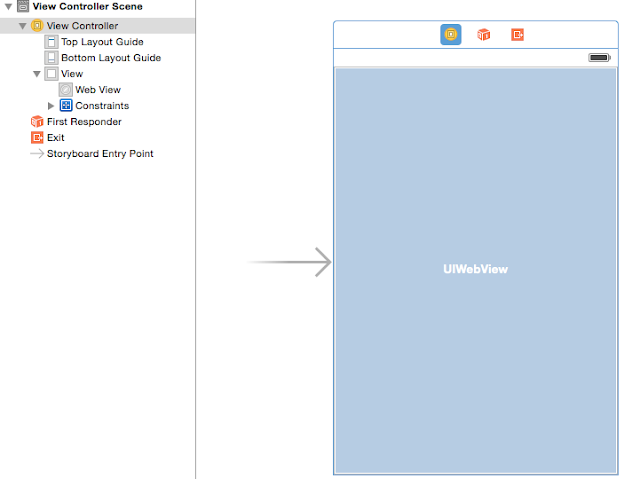Upload Multiple Images/Photos to Server Using MulipartFormatData via AFNetworking
Below is the code snippet which would help in uploading multiple Images along with Text to Server:
-(void)uploadMultipleImagesWithTextMessageUsingAFNetworkingMultipartFormat:(id)sender {
// Upload multiple images to server using multipartformatdata (AFNetworking)
NSString *stringMessage = @"I am uploading multiple images to server";
AFHTTPClient *client = [[AFHTTPClient alloc] initWithBaseURL: [NSURL URLWithString:BASEURL]]; // replace BASEURL
client.parameterEncoding = AFJSONParameterEncoding;
NSMutableURLRequest *request = [client multipartFormRequestWithMethod:@"POST" path:@"/PostMultImagesWithTextAPI" parameters:nil constructingBodyWithBlock: ^(id <AFMultipartFormData>formData) {
[formData appendPartWithFormData:[[[NSUserDefaults standardUserDefaults] objectForKey:KServerAccessToken] dataUsingEncoding:NSUTF8StringEncoding] name:@"AccessToken"];
[formData appendPartWithFormData:[stringMessage dataUsingEncoding:NSUTF8StringEncoding] name:@"PostText"];
// arrayChosenImages is NSArray of UIImage to be uploaded
for (int i=0; i<[arrayChosenImages count]; i++) {
[formData appendPartWithFileData:UIImageJPEGRepresentation([arrayChosenImages objectAtIndex:i], 0.5)
name:[NSString stringWithFormat:@"image%d",i]
fileName:[NSString stringWithFormat:@"image%d.jpg",i]
mimeType:@"image/jpeg"];
}
}];
AFHTTPRequestOperation *operation = [[AFHTTPRequestOperation alloc] initWithRequest:request];
[operation setUploadProgressBlock:^(NSUInteger bytesWritten, long long totalBytesWritten, long long totalBytesExpectedToWrite) {
float uploadPercentge = (float)totalBytesWritten / (float)totalBytesExpectedToWrite;
float uploadActualPercentage = uploadPercentge * 100;
NSLog(@"Sent %lld of %lld bytes", totalBytesWritten, totalBytesExpectedToWrite);
NSLog(@"Multipartdata upload in progress: %@",[NSString stringWithFormat:@"%.2f %%",uploadActualPercentage]);
if (uploadActualPercentage >= 100) {
NSLog(@"Waitting for response ...");
}
progressBar.progress = uploadPercentge; // progressBar is UIProgressView to show upload progress
}];
[client enqueueHTTPRequestOperation:operation];
[operation setCompletionBlockWithSuccess:^(AFHTTPRequestOperation *operation, id responseObject) {
NSData *dataResponseJSON = [operation.responseString dataUsingEncoding:NSUTF8StringEncoding];
NSDictionary *dictResponseJSON = [NSJSONSerialization JSONObjectWithData:dataResponseJSON options:NSJSONReadingMutableContainers error:nil];
NSLog(@"PostMultImagesWithTextAPI API Response: %@", dictResponseJSON);
}
failure:^(AFHTTPRequestOperation *operation, NSError *error) {
NSLog(@"PostMultImagesWithTextAPI API failed with error: %@", operation.responseString);
}];
[operation start];
}
Hope it helps you...
-(void)uploadMultipleImagesWithTextMessageUsingAFNetworkingMultipartFormat:(id)sender {
// Upload multiple images to server using multipartformatdata (AFNetworking)
NSString *stringMessage = @"I am uploading multiple images to server";
AFHTTPClient *client = [[AFHTTPClient alloc] initWithBaseURL: [NSURL URLWithString:BASEURL]]; // replace BASEURL
client.parameterEncoding = AFJSONParameterEncoding;
NSMutableURLRequest *request = [client multipartFormRequestWithMethod:@"POST" path:@"/PostMultImagesWithTextAPI" parameters:nil constructingBodyWithBlock: ^(id <AFMultipartFormData>formData) {
[formData appendPartWithFormData:[[[NSUserDefaults standardUserDefaults] objectForKey:KServerAccessToken] dataUsingEncoding:NSUTF8StringEncoding] name:@"AccessToken"];
[formData appendPartWithFormData:[stringMessage dataUsingEncoding:NSUTF8StringEncoding] name:@"PostText"];
// arrayChosenImages is NSArray of UIImage to be uploaded
for (int i=0; i<[arrayChosenImages count]; i++) {
[formData appendPartWithFileData:UIImageJPEGRepresentation([arrayChosenImages objectAtIndex:i], 0.5)
name:[NSString stringWithFormat:@"image%d",i]
fileName:[NSString stringWithFormat:@"image%d.jpg",i]
mimeType:@"image/jpeg"];
}
}];
AFHTTPRequestOperation *operation = [[AFHTTPRequestOperation alloc] initWithRequest:request];
[operation setUploadProgressBlock:^(NSUInteger bytesWritten, long long totalBytesWritten, long long totalBytesExpectedToWrite) {
float uploadPercentge = (float)totalBytesWritten / (float)totalBytesExpectedToWrite;
float uploadActualPercentage = uploadPercentge * 100;
NSLog(@"Sent %lld of %lld bytes", totalBytesWritten, totalBytesExpectedToWrite);
NSLog(@"Multipartdata upload in progress: %@",[NSString stringWithFormat:@"%.2f %%",uploadActualPercentage]);
if (uploadActualPercentage >= 100) {
NSLog(@"Waitting for response ...");
}
progressBar.progress = uploadPercentge; // progressBar is UIProgressView to show upload progress
}];
[client enqueueHTTPRequestOperation:operation];
[operation setCompletionBlockWithSuccess:^(AFHTTPRequestOperation *operation, id responseObject) {
NSData *dataResponseJSON = [operation.responseString dataUsingEncoding:NSUTF8StringEncoding];
NSDictionary *dictResponseJSON = [NSJSONSerialization JSONObjectWithData:dataResponseJSON options:NSJSONReadingMutableContainers error:nil];
NSLog(@"PostMultImagesWithTextAPI API Response: %@", dictResponseJSON);
}
failure:^(AFHTTPRequestOperation *operation, NSError *error) {
NSLog(@"PostMultImagesWithTextAPI API failed with error: %@", operation.responseString);
}];
[operation start];
}
Hope it helps you...


Hello. Thanks for this post. Can you explain me the difference between send all the images in a single request and make a request for each image? Thanks
ReplyDeleteAnonymous7 November 2014 at 16:01
ReplyDeleteHello. Thanks for this post. Can you explain me the difference between send all the images in a single request and make a request for each image? Thanks
Sending multiple images in a single shot will take less time to get uploaded and sending each image at a time will need more time to get uploaded, as it will require to make connection/disconnection to server for each request.
Deletehow to show progress accordingly image upload (multiple image)
ReplyDelete